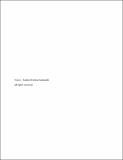| dc.description.abstract | The visual appearance of an image is a complex function of factors such as scene geometry, material reflectances and textures, illumination, and the properties of the camera used to capture the image. Understanding how these factors interact to produce an image is a fundamental problem in computer vision and graphics. This dissertation examines two aspects of this problem: models of visual appearance that allow us to recover scene properties from images and videos, and tools that allow users to manipulate visual appearance in images and videos in intuitive ways. In particular, we look at these problems in three different applications. First, we propose techniques for compositing images that differ significantly in their appearance. Our framework transfers appearance between images by manipulating the different levels of a multi-scale decomposition of the image. This allows users to create realistic composites with minimal interaction in a number of different scenarios. We also discuss techniques for compositing and replacing facial performances in videos. Second, we look at the problem of creating high-quality still images from low-quality video clips. Traditional multi-image enhancement techniques accomplish this by inverting the camera’s imaging process. Our system incorporates feature weights into these image models to create results that have better resolution, noise, and blur characteristics, and summarize the activity in the video. Finally, we analyze variations in scene appearance caused by changes in lighting. We develop a model for outdoor scene appearance that allows us to recover radiometric and geometric infor- mation about the scene from images. We apply this model to a variety of visual tasks, including color-constancy, background subtraction, shadow detection, scene reconstruction, and camera geo-location. We also show that the appearance of a Lambertian scene can be modeled as a combi- nation of distinct three-dimensional illumination subspaces — a result that leads to novel bounds on scene appearance, and a robust uncalibrated photometric stereo method. | en_US |


